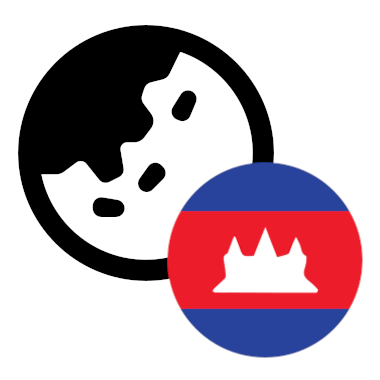Ever browsed a souvenir market and craved something unique, something that tells a story beyond a keychain? Cambodia’s handicrafts offer just that! From intricate rattan baskets, woven bamboo hats to unique accessories, Cambodian artisans breathe life into sustainable materials. But what makes these souvenirs and accessories so special? Is it the vibrant colors or the ancient techniques passed down for generations? Go deeper with us to discover the secrets behind Cambodia’s captivating crafts!
💡 We’re a Cambodian-based company that helps international businesses find reliable suppliers in the country. We have a network of manufacturers, wholesalers, and distributors across many product categories.
🎯 If you’re interested in sourcing products from Cambodia, we can help! Just tell us what you’re looking for, including the type of product, any specific requirements you have (like minimum order quantity), and your sourcing goals. Our local team will then search for Cambodian suppliers that meet your needs within a week.
Does Cambodia have their own garment manufacturing industry? If you are also curious about this, click here to read more!!
A Glimpse of Modern Cambodia
Cambodia’s on the rise! People are talking about its economic boom – 7% growth year after year for almost a decade . It’s a young country with a growing middle class, which means more people are spending and investing. The government is all for business too, welcoming foreign investment with open arms.
Location is key for Cambodia – it’s right in the middle of important trade routes. Plus, they’ve signed deals with China and other countries to make trade even easier. Exports are booming, especially clothes and shoes. Imagine, Cambodia’s exports shot up 17% in just a year!
Cambodia’s not the richest country just yet, but their economy is definitely growing. In 2019, their total GDP was $27 billion, with an average person making around $1,600 a year. Most people work in factories making clothes, tourism, construction, or farming. By the way, most Cambodians are Buddhist and speak Khmer, though English is pretty common too. The capital is Phnom Penh, but there are other cool cities like Siem Reap (where Angkor Wat is) to explore. Oh, and one last thing – they use US dollars there, though they do have their own currency, the Riel.
Cambodia Handicrafts
Cambodia’s handicrafts are like stepping into a time machine! They’ve been around for centuries, carrying whispers of the country’s rich history and culture. Imagine, people were carving stone, weaving baskets, and making pottery way back when Angkor Wat was being built!
Speaking of Angkor Wat, that’s where things really took off for Cambodian crafts around the 12th century. Siem Reap, being right next to this massive temple complex and the royal palace, became the hotspot for all things artistic. It was like a giant art studio, with both everyday folks and super skilled artisans creating beautiful things.
Siem Reap is still the king of Cambodian handicrafts today! It’s the authentic souvenir stop, packed with traditional treasures. The Cambodian government even sees Siem Reap as a key place to boost tourism based on this amazing cultural heritage.
It’s not just about selling souvenirs though. There are a bunch of organizations, both Cambodian and international, working hard to protect and promote these crafts. They want to make sure these traditions don’t get lost and keep the artistic spirit of Cambodia alive.
Cambodia’s Rattan and Bamboo
Rattan and bamboo are like natural treasures for Cambodia. These fast-growing plants are a goldmine for rural communities, providing a source of income and helping to protect the environment. An international organization called INBAR sees real potential here – a chance to fight poverty, manage natural resources wisely, and empower people in the countryside.
The Cambodian government is jumping on board too. They’ve recently set aside a huge chunk of land for growing rattan and are working on getting these products noticed around the world. This is a double win they say – more income for rural families and a way to slow down deforestation, a major problem in Cambodia. Organizations like WWF and the European Union are lending a hand with projects focused on sustainable harvesting.
Leading the charge on the ground is the Rattan and Bamboo Association of Cambodia, kind of like a mix between an NGO and a business group. They’re working with thousands of families in several provinces, teaching them how to grow and craft beautiful things from rattan and bamboo.
Speaking of rattan, it’s like a super versatile plant. There are over 20 types in Cambodia, and some villages rely on it for half their income! It’s perfect for making furniture, baskets, even building materials for houses. And guess what? Mostly women are the ones weaving those baskets, giving them a chance to be financially independent. Rattan is also eco-friendly – it grows quickly and doesn’t need tons of care. Once it’s harvested, it can be easily shaped into all sorts of useful products.
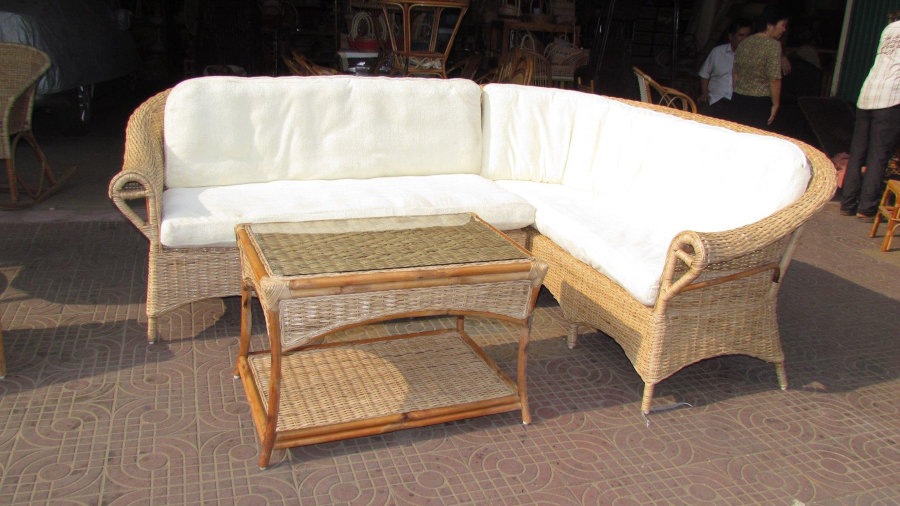
Bamboo is another superstar here. This strong yet lightweight plant is a staple in many Cambodian communities, especially in the north. It’s like a one-stop shop for everything from food and medicine to furniture and building materials. Plus, it can be turned into pulp, fiber, and even biofuel! The best part? Bamboo is a fantastic weapon against climate change. It grows fast, absorbs a ton of carbon dioxide, and doesn’t need fertile land, making it a great alternative to trees.
While most rattan and bamboo products are currently sold locally, there’s a growing interest from places like Thailand, Vietnam, and even China. The dream is to tap into a wider international market, but there are some hurdles. Many producers are small and lack the resources to navigate the complexities of international trade. Another challenge is that a lot of the processing happens near the Thai border, making it easier for products to flow there than further afield.
Vietnamese producers seem to have a bit of a head start. They’re more organized and have better access to international trade shows, which means they can connect with bigger buyers. There’s still a lot of room for Cambodia to grow though. The furniture industry here is already exporting hundreds of millions of dollars’ worth of goods, mostly to the US.
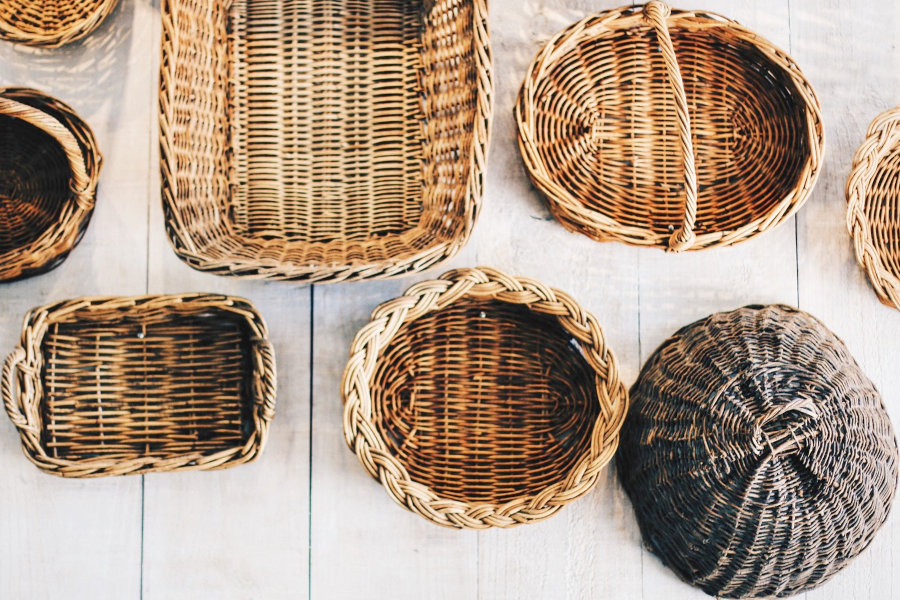
Cambodia’s rattan and bamboo industry is a story of potential and progress. With continued support and focus on sustainability, these natural resources can be a key to a brighter future for the country and its people.
Sharings of a Cambodian Artist
Sopheap Pich used to be a painter, but now he makes sculptures with bamboo and other natural materials. He likes sculpting because it’s more real than painting – the sculptures are 3D objects you can touch and walk around. It’s also more social and fun than being alone painting all day.
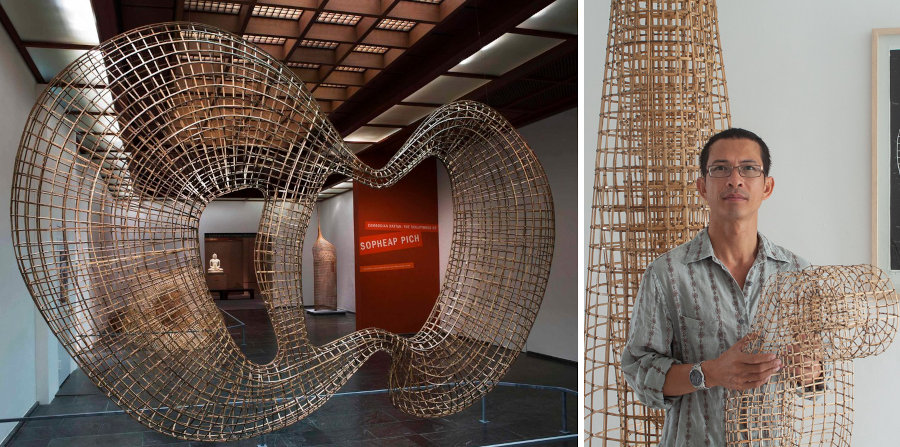
Coming back to Cambodia helped Pich connect more with these special materials. Using rattan and bamboo freed him from having to follow Western art styles. It was like going back to his Cambodian roots and rediscovering the joy of making art, one unique sculpture at a time.
Stone Carving & Jewellery
Cambodia has a long and fascinating history of carving beautiful things from stone. This tradition goes back thousands of years, all the way to the Funan and Chenla kingdoms, even before the famous Angkor temples were built! Back then, they used really old limestone, almost 400 million years old, to make their carvings.
Cambodia’s art style changed a lot when it started trading with India. Ideas from Hinduism and Buddhism became really important. Then, during the Angkor period, stone carving reached its peak. They made giant statues of Buddha that looked kind and regal, and they decorated their temples with intricate carvings that showed stories from their religion and everyday life. They even had special designs they used over and over again, like lotus flowers and seashells, which they called “kbach” in Khmer.
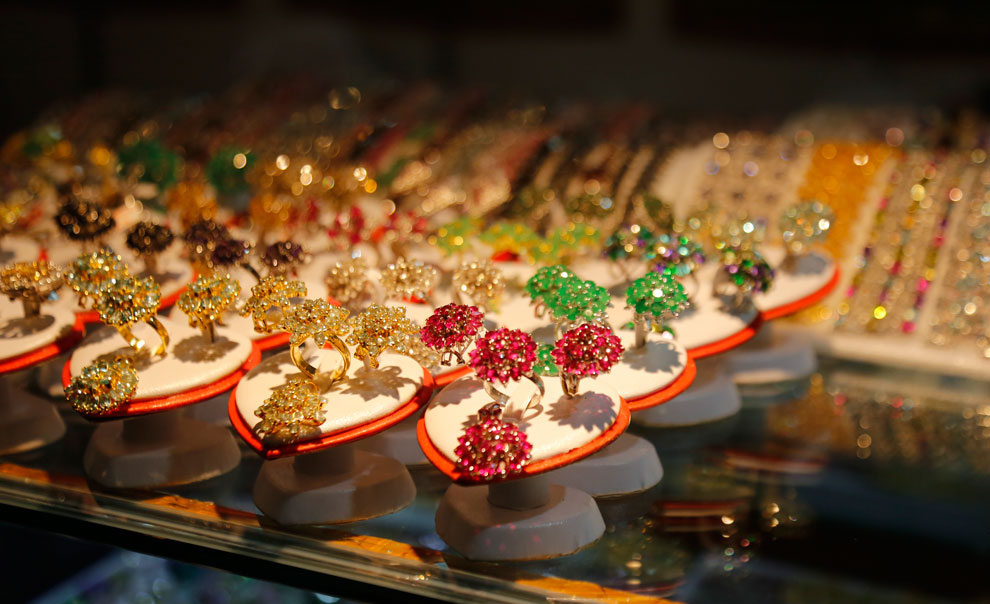
After the fall of Angkor, people didn’t make such big and fancy carvings anymore. They focused on smaller, more practical things. Then, during the Khmer Rouge’s rule, this art almost disappeared completely. Many artists were killed or fled the country.
But recently, there’s been a revival! A new generation of sculptors is learning this amazing skill, some even trained overseas. There are also groups helping to keep this tradition alive. Tourists love these beautiful carvings, especially statues!
Cambodia also has a lot of precious stones, like rubies, sapphires, and amethysts. These are mined near the border with Thailand and then sold in shops around the country, especially in Phnom Penh’s Russian Market.
It’s interesting that Cambodian jewelry designers often use traditional art motifs and even support social projects. Some companies hire people from disadvantaged communities, especially women, to help create beautiful pieces and keep Cambodia’s artistic heritage strong.
While it’s hard to track exactly how much stone carving and jewelry is exported, we do know that Cambodia exported a whopping 3 BILLION US dollars worth of gemstones and jewelry in 2020! Most of it went to Singapore, with Thailand and Hong Kong following behind.
Home Decors and Accessories from Cambodia
Cambodia has a long history of creating beautiful home decorations! They’ve been making amazing things for thousands of years, like pottery, kites, and lacquerware. A lot of Cambodian crafts are made with eco-friendly materials and techniques, which is pretty cool. Plus, many artisans who make these crafts are focused on empowering women and keeping old traditions alive.
Can you imagine making pottery since 5000 BC? That’s how old Cambodian ceramics are! Back in the day (between the 11th and 13th centuries), they often made pottery in the shapes of animals like birds, elephants, and rabbits. In villages around Kampong Chhnang, craftspeople would use a potter’s wheel and special tools to mold the clay. Then, they’d fire it in super hot kilns (up to 1200 degrees Celsius!) to make it hard and strong.
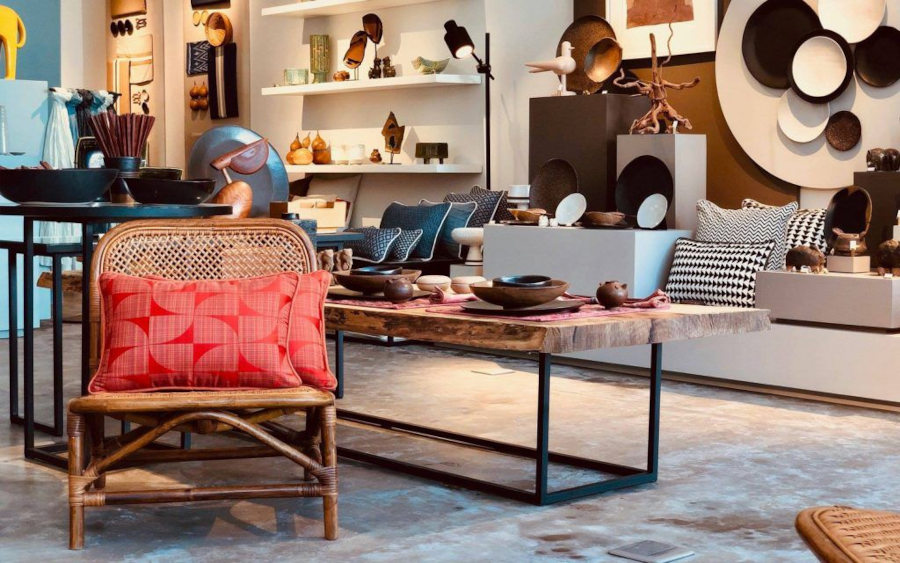
Lacquerware is basically coating wood with a special sap called lacquer. This was another popular Cambodian craft, especially between the 12th and 16th centuries. Back then, lacquerware often had religious designs and symbols on it, like Buddha figures. The colors used even had special meanings! Black meant the underworld and was made from burnt wood. Red meant the earth and came from mercury, and yellow, representing the heavens, was made with arsenic (yikes!).
Flying kites is a huge part of Cambodian culture, and it’s been going on for centuries! After a period of not being as popular, kite flying had a big comeback in the 1990s. These kites, called “kleng ek” in Khmer, are usually flown at night during the monsoon season. They even have a special bow attached that makes a musical sound as they fly!
Things to Consider When Sourcing from Cambodia
Sourcing from Cambodia involves international trade, which means navigating the world of manufacturers and logistics. While Cambodia offers a wealth of beautiful and unique products, there are some important factors to keep in mind before diving into sourcing:
Incoterms Explained
Incoterms, short for International Commercial Terms, are a set of internationally recognized codes that define the responsibilities of buyers and sellers in a foreign trade transaction. Here’s a look at a few common Incoterms relevant to sourcing from Cambodia:
- EXW (Ex Works): This means the seller simply makes the goods available at their factory or warehouse. The buyer is responsible for all transportation costs and risks from that point onwards.
- FCA (Free Carrier): Under FCA, the seller is responsible for delivering the goods to a designated carrier chosen by the buyer at a specific location (usually the seller’s country). The buyer then takes over responsibility for all costs and risks from that point.
- FOB (Free on Board): With FOB, the seller covers the costs of getting the goods on board the chosen vessel at the port of shipment. The buyer is responsible for all costs and risks from that point forward, including transportation and insurance.
- CIF (Cost, Insurance, and Freight): Here, the seller covers the costs of getting the goods on board the vessel, as well as marine insurance, up to the destination port. The buyer is still responsible for unloading the goods and any customs duties upon arrival.
Knowing these basic Incoterms will help you understand who is responsible for critical aspects like shipping costs, insurance, and risk during the transportation process when sourcing from Cambodia. It’s important to discuss the chosen Incoterm with your Cambodian supplier to ensure a clear understanding of each party’s obligations.
For a more in-depth understanding of Incoterms, we recommend consulting a freight forwarder or international trade specialist.
Minimum Order Quantities (MOQs)
Many Cambodian producers, particularly artisanal workshops, operate on a smaller scale. This can translate to minimum order quantities (MOQs) that might be higher than what you’re used to compared to larger factories in other regions. Be prepared to adjust your order quantities or consider consolidating your needs with other buyers.
Lead Times
Production timelines in Cambodia can vary depending on the complexity of the product, the availability of raw materials, and the workload of the artisans. It’s essential to factor in longer lead times compared to faster-paced production environments. Communicate your deadlines clearly with potential suppliers and be flexible when necessary.
Quality Control
While Cambodian artisans are known for their meticulous craftsmanship, establishing a reliable quality control process is crucial. Here are some options:
- Work with a reputable sourcing agent: An experienced agent can help you assess the capabilities of potential suppliers and ensure consistent quality throughout production.
- Conduct factory audits: If possible, arrange a visit to the production facility to witness the manufacturing process firsthand and identify any potential quality concerns.
- Develop clear quality specifications: Clearly define your quality expectations in writing and provide samples or detailed specifications to ensure the final product meets your needs.
Cultural Considerations
Building positive relationships is key to successful sourcing in any country. Here are some cultural aspects to be mindful of when working with Cambodian suppliers:
- Respectful communication: Cambodian culture emphasizes politeness and respect. Be patient, avoid aggressive negotiation tactics, and focus on building trust.
- Personal connections: Taking the time to establish a personal rapport with your supplier can go a long way. Show genuine interest in their work and culture.
- Decision-making: Decision-making processes can sometimes be slower in Cambodia. Be prepared for delays and allow time for internal discussions before receiving confirmations.
- Pricing: Negotiation is a common practice in Cambodian business culture. Be prepared to negotiate, but do so respectfully and be willing to compromise to reach a mutually beneficial agreement.
More Than Just Decorations
The people who make these crafts often use materials and methods that don’t hurt the environment. They also care about helping others, especially women in their communities. So, when you buy Cambodian crafts, you’re getting a beautiful piece of art and supporting a good cause!
Where to buy in Cambodia?
Phnom Penh and Siem Reap are the two most important shopping centres in Cambodia, and travelers must check it out.
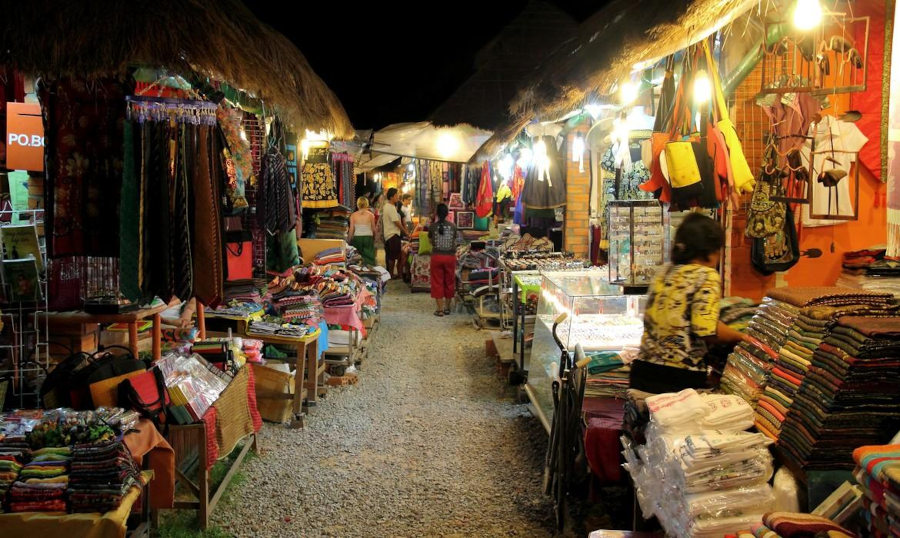
Phnom Penh
- Central Market (Phsar Thmei): This is the largest integrated market in Cambodia, with a wide variety of goods for sale, including gold, silver, jewelry, handicrafts, souvenirs, and clothing.
- Russian Market (Phsar Tuol Tom Poung): This market is known for its cheaper prices and wider selection of souvenirs, clothing, and other goods.
Siem Reap
Old Market (Psar Chaa): This market is located on the banks of the Siem Reap River and is a great place to find souvenirs, clothing, and other goods. There are also many convenience stores, restaurants, and cafes in the area.
Sourcing in Cambodia presents a unique opportunity, but it’s important to be aware of certain aspects, like price negotiation customs and potentially longer lead times. For a smoother experience, you may want to consider working with a sourcing agent with experience in Cambodia. Their knowledge of the market can be invaluable in securing best prices and saving you time.
Giz-Cambodia understands. We’ve been helping businesses in Cambodia navigate the sourcing landscape for years.
Here’s how we can take the weight off your shoulders:
- Expert Negotiation: We’ll fight for your best interests, securing you the most competitive deals on materials and production.
- Streamlined Process: Relax, knowing we’ll handle the sourcing nitty-gritty, saving you valuable time and energy.
- Reputable Suppliers: We have a trusted network of Cambodian suppliers, so you can rest assured you’re working with reliable partners.
Let Giz-Cambodia help you navigate the industry with confidence. We’re here to make your sourcing experience smoother and more successful.
